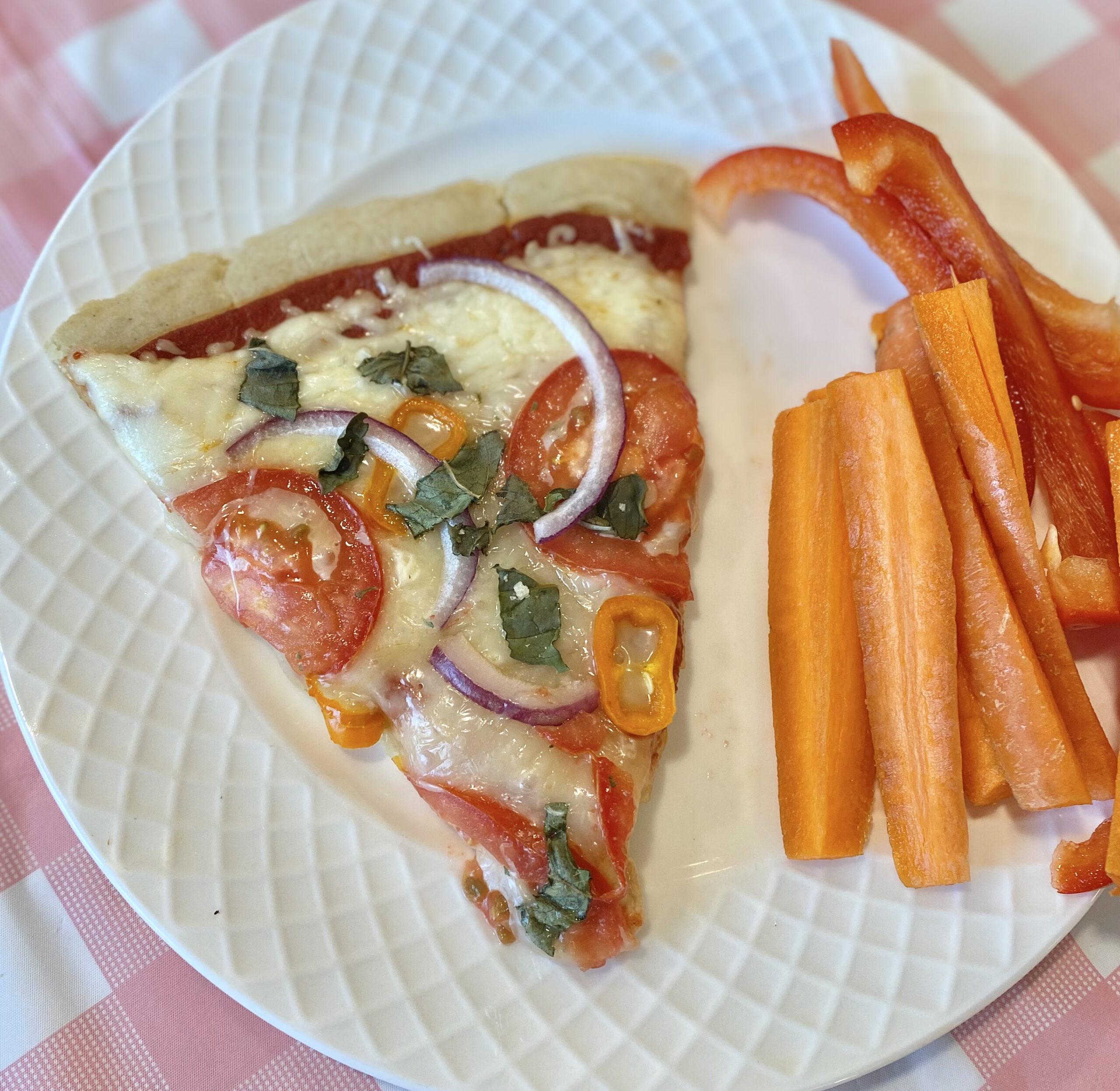After many failed attempts, this gluten free pizza crust finally checked all the boxes: delicious, easy, and holds together well!
Certain Requirements For A Good Crust
For years I tried different gluten free pizza crusts with lots of mixed results. Gluten free dough is typically more difficult to work with. I had already learned that over the years, so I didn’t mind that.
I even knew that gluten free crust might be really ugly and that was totally ok too.
What I really was hunting for was something that tasted good and held together once it was cooked. Crumbly, fall apart pizza pieces are not great, even if they do taste yummy. So I needed both of those.

And Freezable!
This recipe checks both of those boxes. And the third box it checks, that I wasn’t even looking for, is that it is freezer friendly. I love to double or triple the batch, bake the dough until it is just barely done, cool it and then freeze.
Those frozen crusts have saved me so many times over the years.

Do You Have Psyllium Husk?
The only ingredient that is a little less common in most kitchens is the psyllium husk. Although, if you have been doing gluten free for any amount of time you probably have seen it mentioned in recipes before.
Psyllium husk is a soluble fiber. It gets gelatinous in water and helps make gluten free breads more chewy and hold together better.
You can also substitute flax meal. That is what I used for years in this recipe before I finally broke down and bought the psyllium husk.
The psyllium husk does work a tiny bit better than the flax meal but using the flax meal definitely still makes a great crust.
I use psyllium husk powder. This is the kind I bought on Amazon. You can also get it at Azure Standard. I have not used whole psyllium husk before but if that is what you have on hand, I’m sure it will be fine. You might just want to use a little less than the recipe calls for.

Dough Consistency Matters
As a heads up, the consistency of this dough is like a soft cookie dough or a super thick pancake batter. It should not be runny. You should be able to mold it into a pizza crust shape and not have it spread all over the pan.
Alternatively, it shouldn’t be very thick either. It is not like gluten pizza crust at all, that you can hold in your hands and fling in the air. (If you need a recipe for that kind of dough, go here.) Hopefully, the pictures can give you a good idea of what you are looking for.
Over the years, I have used Arrowhead 1-1 Organic All–Purpose Flour, Bob’s Red Mill 1-1 Flour, and two different homemade mixes with this recipe and they have all worked well.

Our Favorite Gluten Free Pizza Crust
1 cup warm water
1 tablespoon honey or sugar
1 1/2 teaspoons instant yeast (I use SAF brand)
1 1/4 cup gluten free flour
1/4 cup almond flour
1 teaspoon baking powder
3/4 teaspoon salt
1 tablespoon psyllium husk powder or flax meal
2 tablespoons extra virgin olive oil
Directions
In a medium sized bowl, mix all the ingredients together well. The dough is kind of like a soft cookie dough. Let it sit for 30 minutes.
Next, grease your pan. I like to use my stoneware for this crust. Afterward, place the dough on the pan. With wet fingers, gently press it into the desired shape. If your fingers begin to stick, get them wet again.
Once the dough is spread to desired shape and thickness (it works best on the thinner side), let it sit for another 30 minutes. Bake for 10-15 minutes at 400. Remove it from the oven and and then top with sauce (our favorite sauce recipe here), cheese and desired toppings.
Return it to the oven and bake an additional 15-25 minutes. I like it best when the edges are starting to crisp up. If they aren’t a little crispy, the center typically isn’t all the way done. Enjoy!



